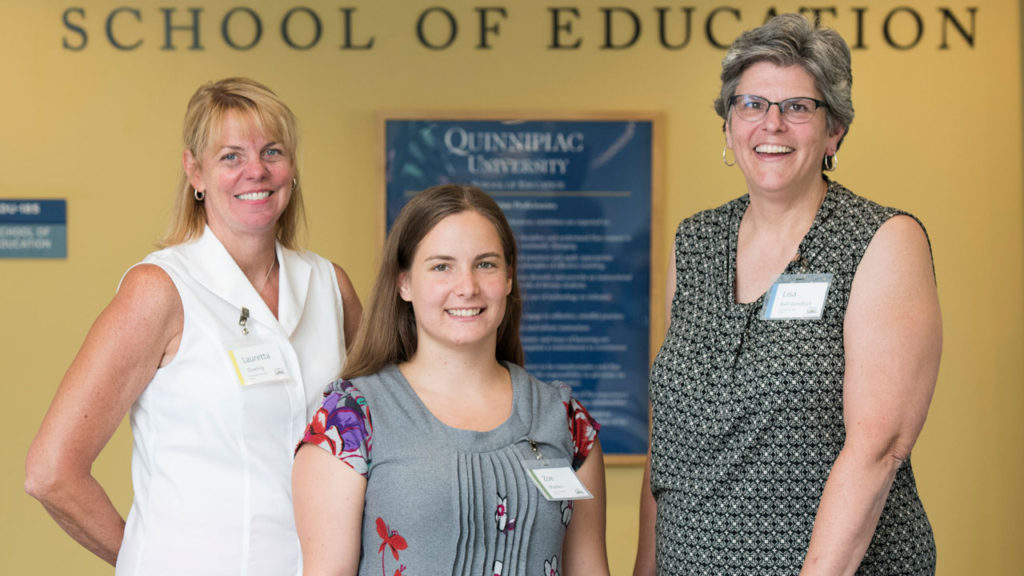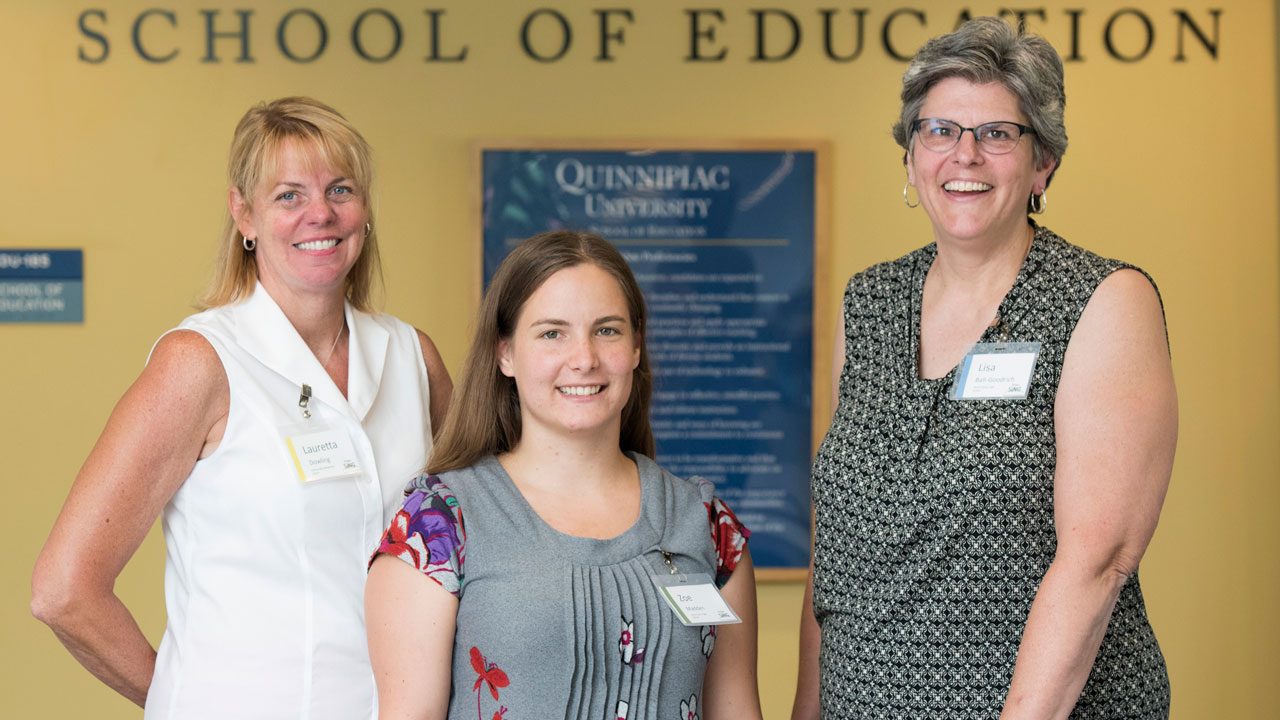
North Haven teachers, from left, Lauretta Dowling, Zoe Madden and Lisa Ball-Goodrich, recently participated in a Quinnipiac University program to enhance their lessons using the Next Generation Science Standards. (Autumn Driscoll /Quinnipiac University).
A group of North Haven educators recently spent four days at the Quinnipiac University School of Education learning how to enhance their lessons using the Next Generation Science Standards.
The standards are state-led K-12 initiatives in science learning developed by the National Research Council, the National Science Teachers Association, the American Association for the Advancement of Science and other critical partners. Finalized in 2013, the standards are rich in content and practice and arranged in a coherent manner across disciplines and grades to provide all students an internationally benchmarked science education.
The teachers, who are in the first year of the two-year project, visited Quinnipiac July 28 and 29 and Aug. 1 and 2.
The training, called Project SING (Science Induction for the Next Generation), was made possible by a Teacher Quality Partnership Grant from the state Office of Higher Education that was awarded to Quinnipiac and the University of New Haven.
Cindy Kern, assistant professor of education and director of the Bristol-Myers Squibb Center for Science Teaching and Learning at Quinnipiac, Amanda R. Bozack, formerly of the University of New Haven and currently at Radford University, and Rosemary Whelan, a biochemist from New Haven, led the training. Also helping with the professional development program were Courtney McGinnis, assistant professor of biology at Quinnipiac, and university education students Samantha Franzese of Westchester, New York, Chelsea Savage of Pembroke, Massachusetts, and Emily Sparago of Cheshire.
The program brought together teams of new science teachers, veteran science teachers and administrators from the Capitol Region Education Council and Notre Dame High School of West Haven, as well as the Hamden, Meriden and New Haven school districts, to learn innovative approaches to teaching science based on the Next Generation Science Standards.
“The teachers will spend an entire year really engaging in and understanding the paradigm shift from what science teaching is now to where we want to move to. The goal is to design a unit of instruction that is based on a natural phenomenon and addresses multiple next generation science standards.”
This project is funded in part by a federal grant under Title II of the No Child Left Behind Act administered by the State of Connecticut Office of Higher Education; $191,068 of the cost of the project was financed with federal funds.
